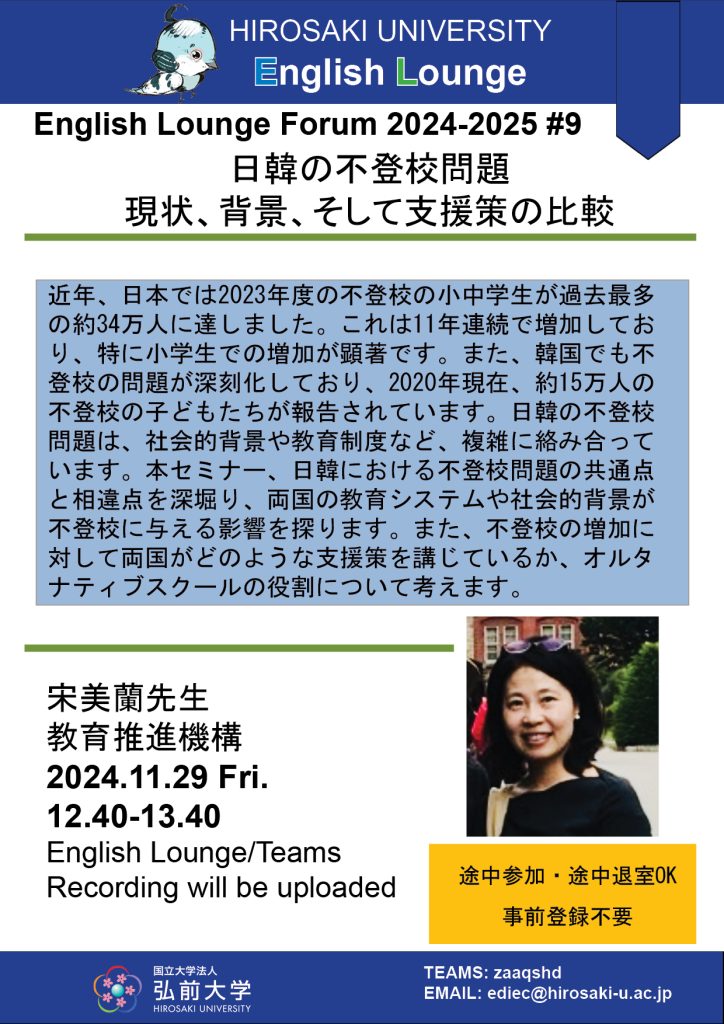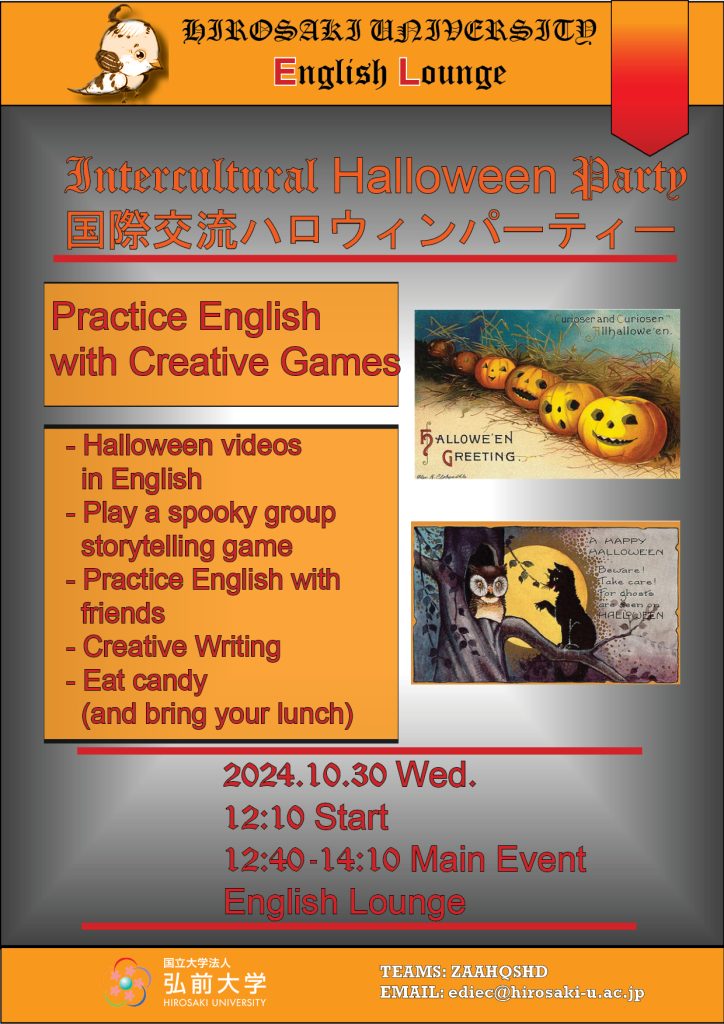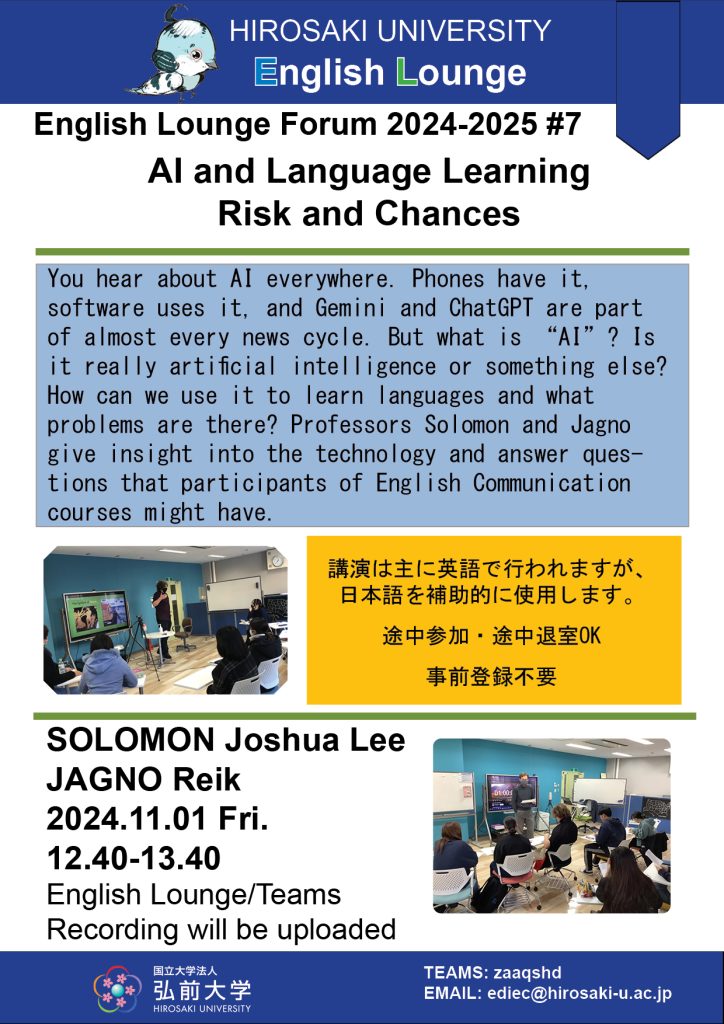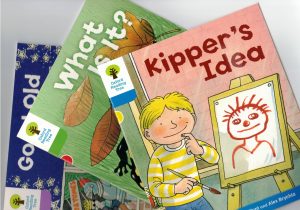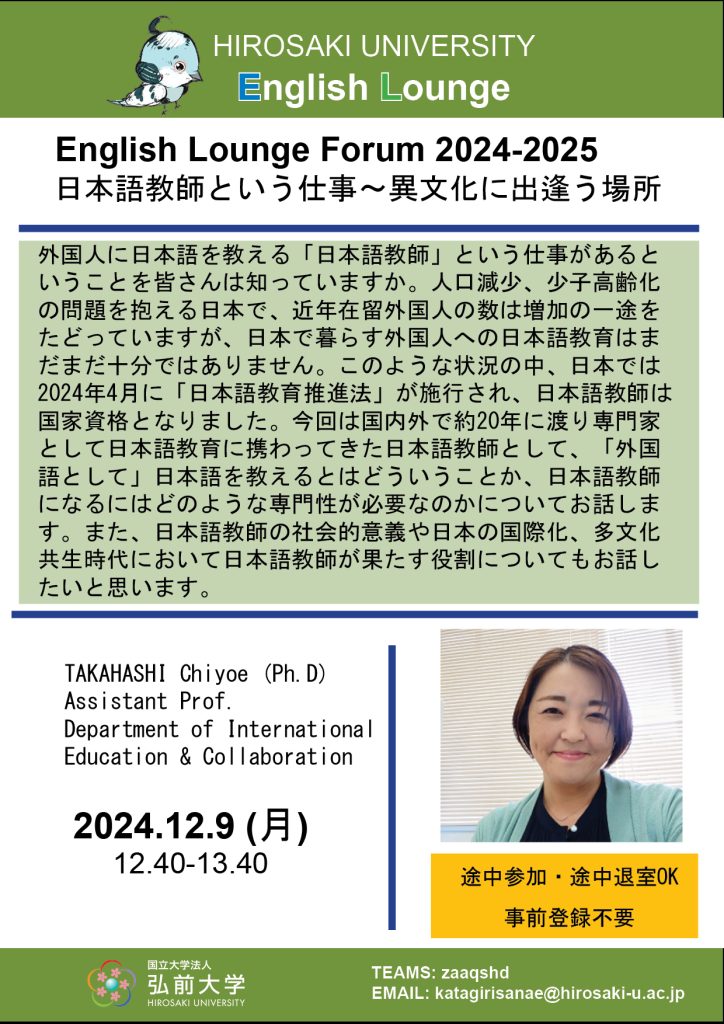
Oct 11
EL本棚紹介(95) The Story of Doctor Dolittle, by Hugh Lofting
[Welcome to the EL Book Introductions series. These posts are all short (<180 words) introductions/reviews of books in the EL library. They focus on telling you what we think will be interesting for you, a college student and English learner, so use them to help you find the right book for you. You can also use the tags to find books about topics you might be interested in.]
_______
Have you ever wished that you could talk with your pet? Doctor Dolittle is the story of a man who learns to talk with all sorts of different animals. He works very hard to help animals around the world, and has many adventures with them. This novel begins with the dedication “To all children / Children in years and children in heart / I dedicate this story.” It is true that Doctor Dolittle was written as a children’s story, but it is a literary classic that adults can enjoy as well.
This is the first book in a series of novels. It has also been turned into many movies, beginning with Doctor Dolittle in 1967, and most recently Dolittle in 2020 with Robert Downey J. in the lead (https://www.imdb.com/video/vi267763481/?playlistId=tt6673612&ref_=tt_pr_ov_vi).
Doctor Dolittle was written in 1920 in England, and so there are a few old-fashioned words. However, there is a glossary in the back of the book to help you. Also, you can read about the main characters in the back of the book before jumping into the story.
My two cents: This is an interesting example of a recent trend in publishing. The story is very old, and originally had some racist scenes. Today, the publisher has chanced a little bit of the text and illustrations so that they are not offensive.
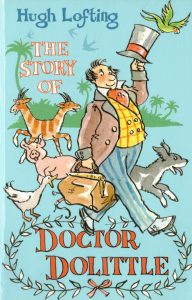
Sep 02
English Lounge September Schedule
| MON 月 | TUES 火 | WED 水 | THURS 木 | FRI 金 |
| 2 | 3 | 4 | 5 | 6 |
| Closed | Closed | Closed | Closed | Closed |
| 9 | 10 | 11 | 12 | 13 |
| Closed | 14:00 – 17:00(Brian Birdsell)
Talking about the USA |
14:00 – 17:00(Brian Birdsell)
Talking about the USA |
14:00 – 17:00(Joshua Solomon)
English through Games and Conversation |
14:00 – 17:00(Reik)
English through Games and Conversation |
| 16 | 17 | 18 | 19 | 20 |
| Closed | 13:00 ~ 17:00 ** 特別使用 ** | 14:00 – 17:00(Megumi Tada)
TOEIC Practice |
14:00 – 17:00(Joshua Solomon)
English through Games and Conversation |
14:00 – 17:00(Megumi Tada)
TOEIC Practice |
| 23 | 24 | 25 | 26 | 27 |
| Closed | 13:00 ~ 17:00** 特別使用 ** | 14:00 – 17:00(Reik)
English through Games and Conversation |
14:00 – 17:30(Joshua Solomon)
English through Games and Conversation *** TOEFL ITP Practice test (事前登録必須) 16:00-17:30 |
14:00 – 17:00(Reik)
English through Games and Conversation |
Jul 19
EL本棚紹介(94) The Canterville Ghost: The Graphic Novel, by Oscar Wilde and Sean Michael Wilson
[Welcome to the EL Book Introductions series. These posts are all short (<180 words) introductions/reviews of books in the EL library. They focus on telling you what we think will be interesting for you, a college student and English learner, so use them to help you find the right book for you. You can also use the tags to find books about topics you might be interested in.]
_______
What do you think of when you hear the words “ghost story”? A ghost attacking people? Murder and blood? How about humor? The Canterville Ghost is a famous and enjoyable story because it is not what you expect. The first part of the story is very funny. The middle of the story is sad. The end of the story even has some romance. It is not a stereotypical ghost story.
The Canterville Ghost tells the story of the Otis family who comes from America to live in the big old Canterville house. Sir Simon, the Canterville ghost, has been “living” in the house for hundreds of years. Everyone knows that the ghost is real, and he works very hard to keep his reputation as scary and horrible. However, the Americans are not scared of the ghost, and treat him very differently. The boys of the family are mean and play tricks on the ghost. Only the daughter, Virginia, cares enough to listen to his sad story and help him in the end.
My two cents: Like the rest of the “Classical Comics” series, this book makes a fun piece of classic literature easy to read and enjoy. Do not skip this book just because you do not like the so-so art style.
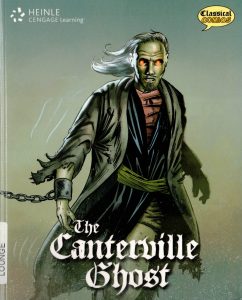
Jul 19
EL本棚紹介(93) Dracula: The Graphic Novel, by Bram Stoker and Jason Cobley
[Welcome to the EL Book Introductions series. These posts are all short (<180 words) introductions/reviews of books in the EL library. They focus on telling you what we think will be interesting for you, a college student and English learner, so use them to help you find the right book for you. You can also use the tags to find books about topics you might be interested in.]
_______
Like all of the titles in the “Classical Comics” series, Dracula is based on a very famous piece of literature. There have been countless film versions of Dracula, and the title character is an important cultural figure in the English-speaking world. Dracula also made a lot of rules about vampires famous, and they can now be seen in many television shows and movies, like Buffy the Vampire Slayer (also available in the English Lounge).
Dracula is the name of a vampire lord who travels to England, attacks young women, and tries to turn them into his vampire brides. Mina Harker and a group of men who promise to protect her fight back, chasing Dracula back to his home country and saving England in the process. The original novel was written in “epistolatory” style, meaning that the whole book was a collection of letters, diary entries, and notes. This comic version keeps some of the letters and diary entries, but most of the story is told directly. The end of the book contains a vocabulary list and background about the novel. It also has an interesting short explanation of how the book was written.
My two cents: I think that this is worth checking out if you are interested in vampires and horror. However, it felt like there were a lot more words per page than Frankenstein or A Christmas Carol, so it may take you longer to read the whole thing.
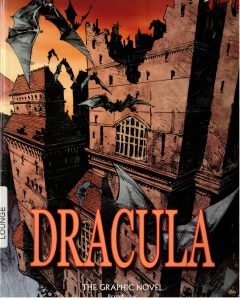
Jul 12
EL本棚紹介(96) The Borrowers, by Mary Norton
[Welcome to the EL Book Introductions series. These posts are all short (<180 words) introductions/reviews of books in the EL library. They focus on telling you what we think will be interesting for you, a college student and English learner, so use them to help you find the right book for you. You can also use the tags to find books about topics you might be interested in.]
_______
Almost everyone likes Studio Ghibli movies. If you do, you may be interested in The Borrowers, which is the basis for the movie The Secret World of Arrietty (借りぐらしのアリエッティ). This is a classic story and the beginning of a long series of books. It is about a tiny girl called Arrietty who lives with her family in an old house. They borrow things from the humans who live there, but they must never been seen.
This story was originally written in 1953, but the language is not too difficult. It is an adventure story, and something interesting or exciting happens in every chapter. The author does a good job of worldbuilding, too. “Worldbuilding” means teaching the reader all about the fantasy world. You won’t just learn about Arrietty and her family, but you will also learn about different types of little people, their different cultures, and their attitudes.
My two cents: I had known about this book for a long time, but only read it recently. I was surprised by how creative and detailed it was, even though it is still pretty easy to read.


